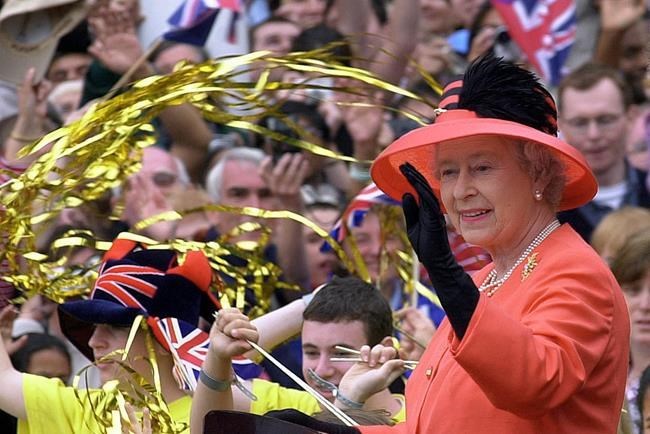Kevin Ward, who recently retired after 35 years at The Canadian Press, was the news agency's European correspondent, based in London from 2000 to 2004. During his time in England, he covered several milestones in the Queen's reign. He recounts some of his experiences in covering the Royal Family, both in London and in Canada.
---
Children were perched on the shoulders of their parents, packed side by side on the Mall, straining to get a glimpse of the Queen as she marked her Golden Jubilee in June 2002.
Later in the afternoon, when the Queen stepped onto that famous balcony at Buckingham Palace with her husband, the Duke of Edinburgh, the roar of the crowd almost shook the ground around me. The screams were deafening. I remember thinking this must be what it feels like to stand next to a jet engine at takeoff.
It was proof that even during a tumultuous period in the history of the Royal Family following the death of Diana, the Queen transcended any cynicism surrounding the monarchy.
The cheers were genuine displays of affection for a 76-year-old woman whose reign spanned generations, with no sign she was slowing down.
Covering the Royal Family as European correspondent for The Canadian Press didn’t give me access to royal events that British journalists working for major U.K. news organizations would get. I would occasionally get an invitation to royal events as a Canadian representative from the group representing the Commonwealth press because I worked for the national news agency.
For the most part, my work was done on the periphery, watching from a distance, mostly speaking to people who were craning for a view of a moment in history.
I was often looking for Canadians to interview, and there was never a shortage of people from home, willing to share their experiences and what the Queen meant to them.
2002 wasn't an easy year for the Queen. Just weeks before the Golden Jubilee celebration, the Queen's sister, Princess Margaret, and the Queen Mother both died.
I remember the morning of the Queen Mother's funeral, heading into Central London as dawn broke to interview those who had found places on the street to watch the procession.
Outside Westminster Abbey, I found Canadians who had spent the night on the sidewalk to save their spots. They were a cross-section of the country, from different provinces and a range of ages. I was always struck at how many people I interviewed expressed their concerns about how the Queen would be coping at times of loss in her life.
The connection people felt to the Queen was always interesting to me. Her stoic attention to duty and ritual struck a chord with many, regardless of their age.
For older generations, the Queen's sense of duty harkened back to the Second World War and her father's decision to remain at Buckingham Palace during the Blitz.
For younger people, she was a stalwart, the only monarch they had known in their lifetimes.
She was a key player at key moments, and not just in British history, but in the histories of Commonwealth countries as well, including the repatriation of the Canadian Constitution and the signing of the Charter of Rights and Freedoms in 1982.
The ceremony on Parliament Hill to sign the Charter happened when I was working at my first job in journalism at the Windsor Star. Twenty years later, I was covering royal events for CP. It was never my intention, but I found myself taking a greater interest than most Canadian reporters of my generation in the monarchy, even being asked to chime in on the section of the CP Stylebook that covers the royals.
I think my interest was solely because of the Queen. There was a mystique about her, which brought Canadians out by the tens of thousands to witness her final visit to Canada in the summer of 2010.
At the time, I was Atlantic bureau chief for CP, based in Halifax, where the Queen began her nine-day tour.
"My mother once said that this country felt like a home away from home for the Queen of Canada .... I am pleased to report that it still does," she told the throng of admirers who came to see the start of her trip, which also marked the centenary of the Canadian Navy in the port city.
Later in Ottawa, 70,000 were on Parliament Hill when she made an appearance for Canada Day.
"During my lifetime, I have been witness to this country for more than half its history since Confederation," she said. "I have watched with enormous admiration how Canada has grown and matured while remaining true to its history, its distinctive character and its values."
In covering the Queen at different times in my career and speaking to Canadians about how she touched them during her reign, her longevity, dedication, and commitment to duty as the world experienced ever quickening and unprecedented change became a common thread. She was a constant in their lives.
This report by The Canadian Press was first published Sept. 9, 2022.
Kevin Ward, The Canadian Press


